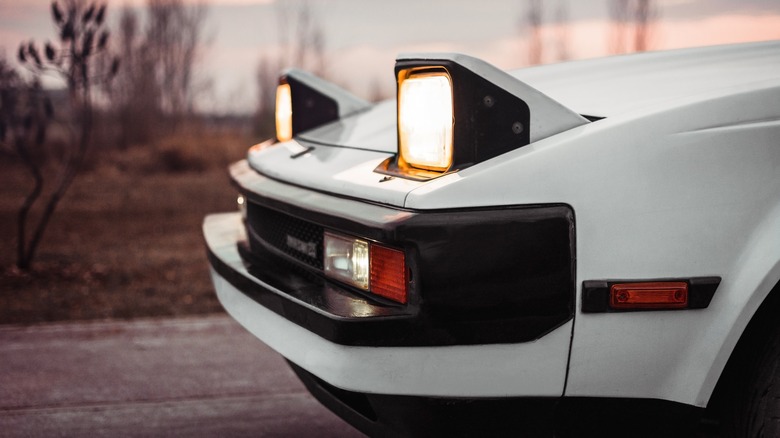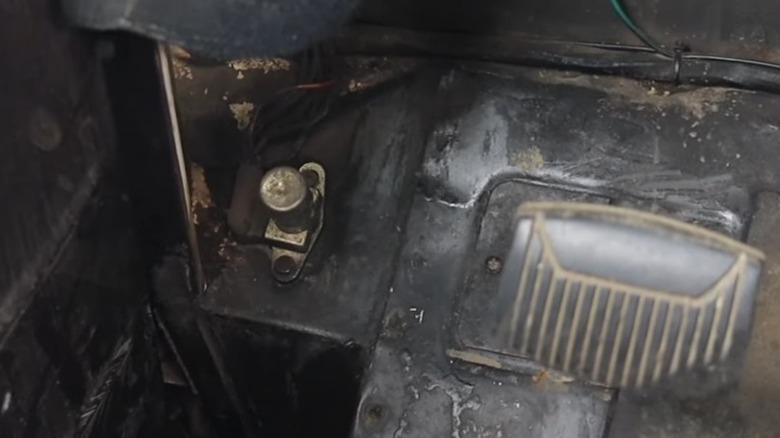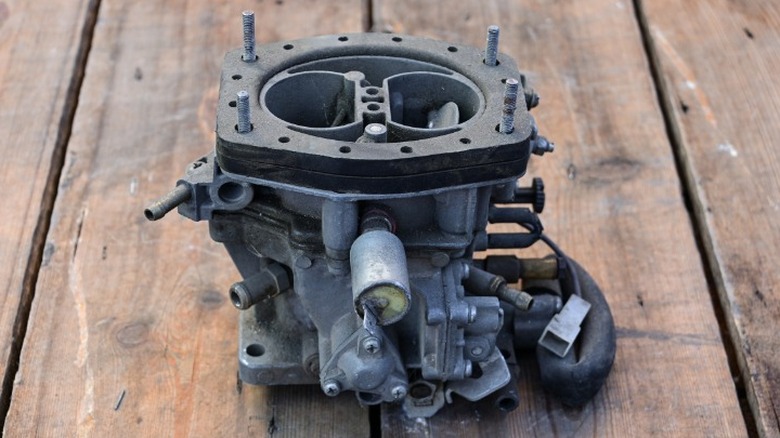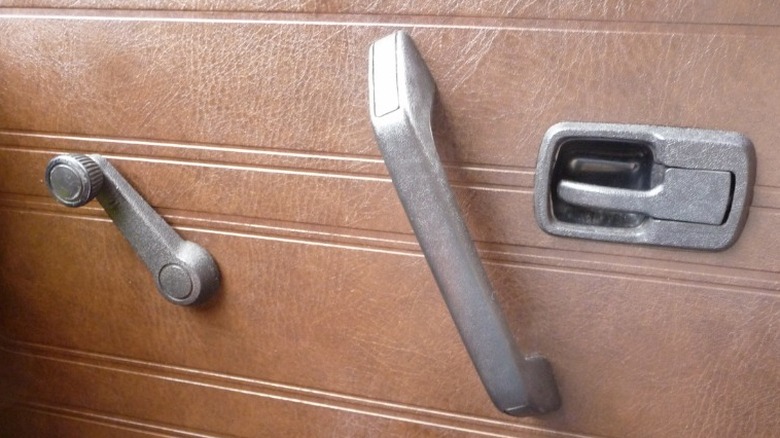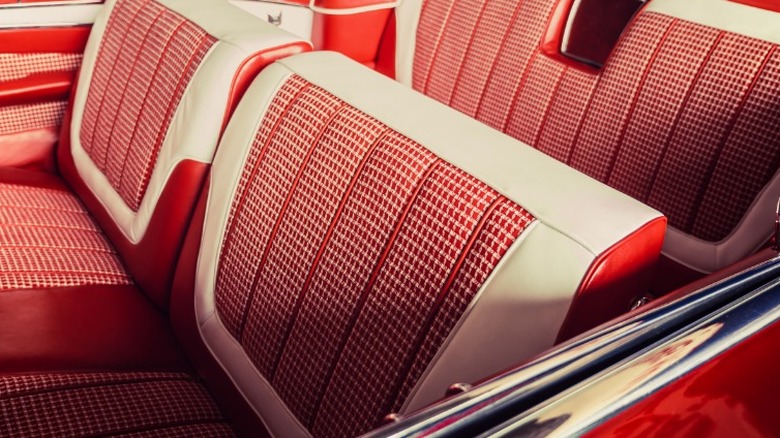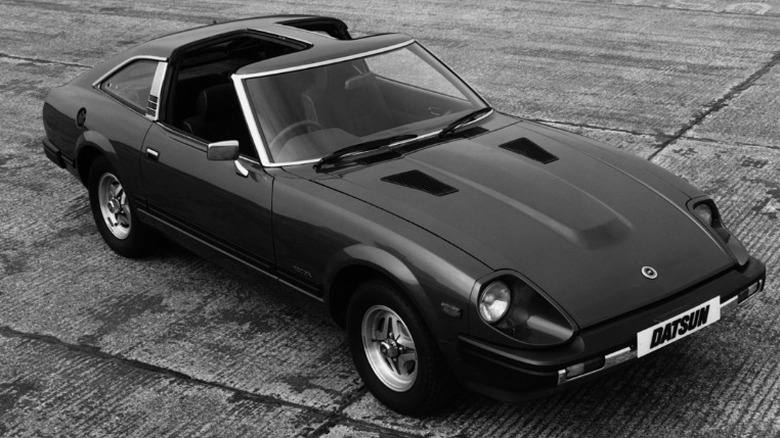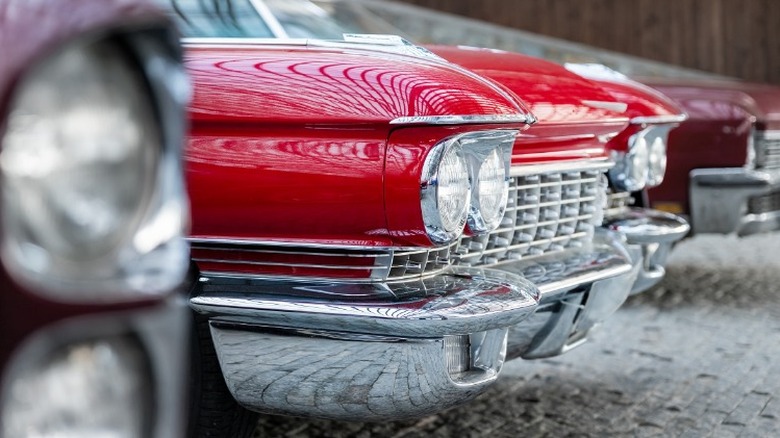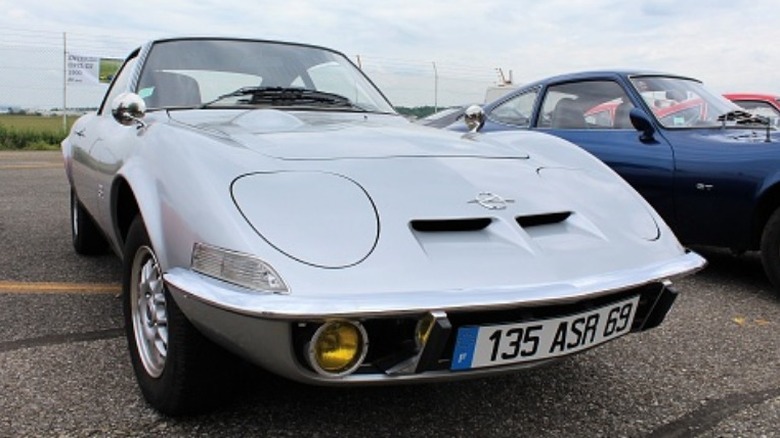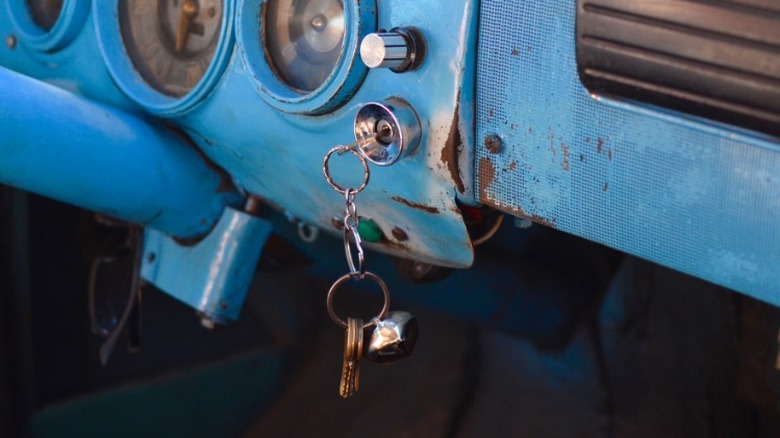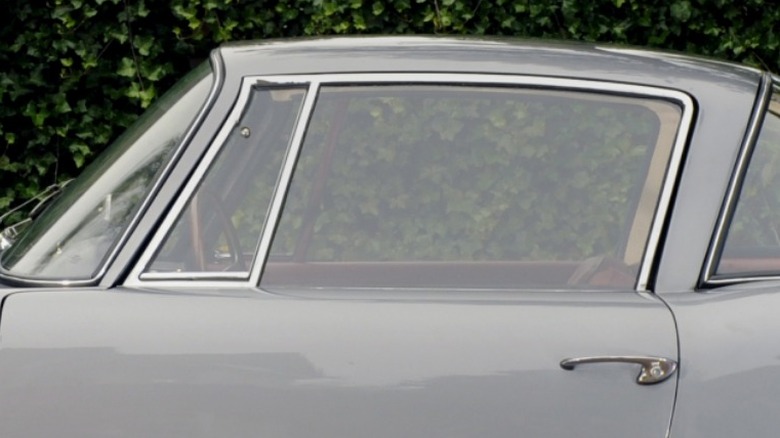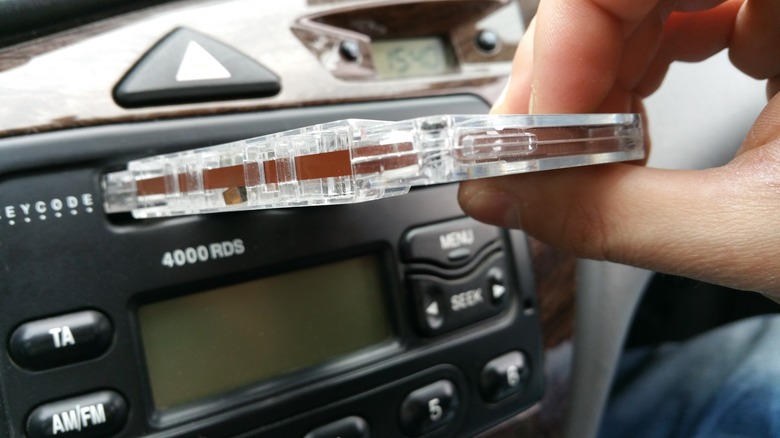10 Old Car Features That You Never See Anymore
For better or worse, many features on classic and antique cars are no longer seen on modern vehicles — some of which we miss and others that are welcome to stay in the dustbin of history.
Since the dawn of the automobile age in the late nineteenth century, the features of automobiles have evolved. The first cars featured nothing more than the implements needed for steering, acceleration, and braking, but additional seats, cargo storage, lights, and more were soon added as soon as people saw a need. This has left a steady string of improved features leading directly to their modern-day implementations, along with some that are long obsolete.
However, just because a feature is no longer included in modern automobiles does not make it automatically dispreferred. Some changes have come about from updates in safety regulations while others have catered to the tastes of buyers. Manufacturers make decisions based on what is popular and profitable, which often means that features wanted by a minority of buyers tend to fall by the wayside — which is part of the reason why some people will always prefer a classic car anyway.
Regardless of why these things have been discontinued, these 10 features will not be making a comeback anytime soon.
Foot operated high beams
In the category of features that have gone away but maybe should not have is the foot-operated high beam, or dip beam, switch. Today, if you want to illuminate your high beam headlights, you manipulate one of the stalks on the side of your steering column. Most manufacturers have made it such that pulling it back will switch the beams, although on some you push it forward. In many older makes and models, this was accomplished by a small round foot switch located at the far left of the floorboard with a simple single click to turn on the high beams and another to turn them off.
The foot switch disappeared in most cars by the 1980s. A couple of reasons have been set forth as hypotheses for this change. One is that cars became smaller and most switched to a front-wheel-drive platform, which reduced the area available in the footwell and below the floor pan itself. Another states that, for various reasons, it became cheaper to put the switch on the stalk and connect it to a relay to send power to the bulb. Perhaps a more reasonable explanation is that car companies were simply following trends, seeking to emulate and catch up to the competition.
No matter what the reason, with the proliferation of digital controls in modern cars, foot switches are just a thing of a bygone era.
Carburetors
For internal combustion engines to run, they require fuel and air. However, liquid fuel does not burn easily, so a device to mix it with air is required. The first device created to accomplish the task is the carburetor, which metered fuel into gasoline-powered engines in the first century of the automobile. Carburetors work by metering a small amount of fuel into the engine by mixing it with air in a process called atomization, which results in a fine mist of fuel being mixed with the air to bring it as close as possible to being in a gaseous state as possible. Carburetors rely on simple principles but can be complex devices to maintain and operate reliably.
Fuel injection came along starting in the 1950s with a way of metering the fuel directly into the engine by injecting pressurized fuel through a nozzle directly into the engine. It allowed fuel delivery to be more precisely controlled and computerized operation has made it highly reliable.
Like many technologies, fuel injection did not see widespread use until it became more affordable, while EPA emissions regulations provided further incentive for manufacturers to invest in its development. This resulted in all manufacturers switching over to fuel injection, with the last car sold with a carburetor in the U.S. being the 1990 Subaru Justy. As fuel injection is ultimately much more reliable and easier to maintain, carburetors and their cantankerous nature are not to be missed.
Window cranks
To say this is something you will not ever see again would be folly as it is a feature that is still offered on new cars, but you will almost never see it. Some younger folks may have never ridden in a car with a short arm with a knob on the end sticking out of the door panels. This arm is to be rotated to roll the window up or down, and it was commonplace on all cars until power windows became more ubiquitous starting in the late '80s.
At first, power windows were reserved only for luxury cars like Cadillacs and slowly became options for higher trim levels of mid-range models. They would eventually be relegated only to economy compacts, but today, you may have trouble finding a single new car on a dealer's lot without power windows. Some companies still offer them, but they likely have to be ordered or they are found on commercial or fleet vehicles only.
With power windows being so common today, not having them seems more like a mild form of archaic torture anyway.
Bench seats
Another vestige of early automobiles lies in the seating. Cars' origins stem from people of the Victorian period adding engines to designs drawn from carriages meant to be pulled by horses. Inventors of this period had no concept of what a car could or should be, so they revised what they already had available. Seating in carriages and wagons of the time could be as basic as a plank of wood or an elaborate upholstered bench stuffed with filling and covered by finely crafted leather. Seating for the first automobiles mimicked the seating of the carriage and continued to do so as the industrial age progressed.
By the time the automobile industry was fully mature, most passenger cars were fitted with bench seating front and rear, with the exception being sports cars and race cars. Starting in the '60s and gaining steam through the '70s and '80s, front bench seating started to give way to bucket seats separated by a center console, often equipped with a gear selector and various switches.
Today, front bench seats are almost fully extinct as no company offers them on any new passenger cars. This is a result of changing preferences as well as safety regulations making it difficult to fully protect passengers in the middle of the front seats. The only way to find a front bench seat in a new vehicle is in a truck or SUV, and those are rare on the former and likely come by special order only.
T-tops
When choosing a car that will invariably make you look cool, it is hard to find anything better than a T-top. For anyone unfamiliar with this feature, it is one in which a section of roof above the passenger and driver can be removed in two sections meeting at a bar down the middle of the roof. These were common in many sports cars of the '70s and '80s but fell out of favor soon after. Perhaps the most iconic car ever with T-tops is the black Pontiac Trans Am in "Smokey and the Bandit," featuring a cooler-than-cool Burt Reynolds.
The T-top's history can be traced to a patent filed in the late '40s, but it was the 1968 Corvette that saw them put into full production for the first time. These roof cut-outs then made it to the second-generation Trans Am and spread to a range of cars after that. Some of the models featuring T-tops include the Oldsmobile Cutlass, Ford Mustang, Nissan 300ZX, and even Cadillac offered a motorized retractable T-top for a time on its Eldorado.
However, this option was slowly removed from most purchase orders through the '90s, leaving the Trans Am and Camaro the last models to offer this feature in 2002.
Chrome bumpers
While cars today have bumpers — just as they have for more than a century — they have changed drastically over the last few decades.
The first cars fitted with a metal bumper received them around the turn of the last century. Bumpers have been installed on cars and trucks as protection against low-speed collisions but were then incorporated into the designs of cars and used as a way to add flair and differentiate one model from another. They were largely decorative until the 1970s saw a raft of safety regulations come into place and mandate that bumpers survive impacts of at least five mph intact. This led to them becoming much larger blocks of steel on the front and rear of cars but also became ungainly appendages in the process. These have since been phased out.
Starting in 1968, Pontiac fitted its GTO with bumpers hidden under painted flexible covers that matched the contours of the car. This style spread to other models to the point that all cars today have their bumpers obscured under flexible bumper covers. There are still impact-resistant bumpers on our cars — they are just hidden from view.
Today, the only time you will find a new vehicle with a chrome bumper is on a truck and generally only on the rear. Full-size trucks were the last holdouts, but even they have incorporated bumper design into the body contours throughout the industry, leaving elaborate and flashy ornamental chrome bumpers relegated to the classics.
Pop-up headlights
The most iconic feature found on the coolest 1980s sports cars and supercars is the pop-up headlight, although these lights are not exclusive to sporty automobiles. The pop-up headlight is a hidden design feature in which a mechanism obscures the headlight when not in use, often resulting in a sleek and uncluttered face of the car. This was first seen in the 1936 Cord, and some of the most notorious and attractive cars ever made feature them, including the Ferrari Testarossa, Lamborghini Miura, and several generations of Corvette.
Pop-ups gained steam in the '70s when manufacturers installed them on giant Lincoln luxury barges and '80s on imports such as the Nissan Pulsar and Honda Accord. Their popularity waned in the '90s as composite headlights spread and the need to obscure headlights largely went away.
Although the vacuum and electric motors proved to be problematic and unreliable, it would be safety regulations that ultimately killed them. They are not technically illegal, but producing cars to comply with pedestrian protection makes them impractical. The last cars to feature them are the 2004 Chevrolet Corvette and the 2004 Lotus Esprit.
Keys
As long as there have been cars, there have been car keys, right? Well, not exactly.
The earliest cars did not have keys probably because nobody had ever thought to have them. After all, horses never came with keys. However, in 1910 keys started to be added to cars, although they did not yet start the car. The first keys only operated a switch to keep a car from running –- starting the car still had to be done with a crank by hand. Not until Cadillac created the electric starter did the modern ignition switch start to come about. Still, this left the key as an integral part of the automobile ever since — although that may not be the case forever.
Modern cars have for many years switched over to push button start with keys being nothing more than chips with NFC technology. So long as the key is within range, the car will unlock and start. Physical keys to open locks are usually hidden within the key fob and can be retrieved to open cars in obscured locks for emergency situations when the battery is dead. But having a piece of metal to insert into an ignition has largely gone away.
Still, keys are not yet entirely obsolete. At least eight models offered in the U.S. can be purchased with a traditional key, but only in the base models. With the way the technology is advancing, it is almost guaranteed that even these will be phased out within a few years and car keys will be a thing of the past.
Wing windows
In the days before air conditioning, automakers had to find inventive ways of keeping passengers cool. One of them was the wing window, also known as a vent window. This was a small triangular piece of glass that could be rotated to provide a shot of air delivered directly inside the cabin.
The wing window is an inventive piece of engineering that first appeared in the '30s to help cool passengers. Fisher Body, which manufactured automobile bodies for General Motors, first installed its Ventipane window system, placing a window vent on all four corners of the car. This offered each passenger the ability to control their own comfort by controlling the amount of breeze to their seat.
These windows would be a fixture on every car going forward until 1966, when the Buick Riviera first came out without them. By the '60s, air conditioning started to become more standardized on new cars and continued to grow in popularity as an option. Although some say they caused too much wind noise, others wish cars still had them — but don't expect manufacturers to bring them back anytime soon.
CD, cassette, and 8-track players
Ever since Motorola figured out how to make a radio fit inside of a car, it has become a staple of the automotive industry. This was a revolutionary step in curing boredom on the road as well as building networks of blowhards and cranks to yell at us on the way to work. AM radio ruled the automobile for years until FM was introduced and technology has continued to move forward every decade since then.
First, the 8-track tape player hit the shelves of the auto parts stores in the '70s before being integrated into factory stereos, only to be replaced by cassette players a few years later. The '80s brought about CD players, which became the standard in every car until the new millennium brought the digital age to fruition.
The advent of streaming media and the always-connected mobile devices have opened up wireless communication unimaginable barely more than a decade ago. With the full integration of digital media and wireless connections into cars from the factory, having a physical media player is now a bit unnecessary. Although the technology progressed rapidly since the '70s, some may be surprised to know that the last car to sport a cassette player from the factory was the 2010 Lexus SC 430 — which may be saying something about its target market.
CD players continue to be offered in new cars, but they are rapidly disappearing. Today, there are a handful of new vehicles available with a CD player, but we should expect that you won't be seeing them for much longer.
